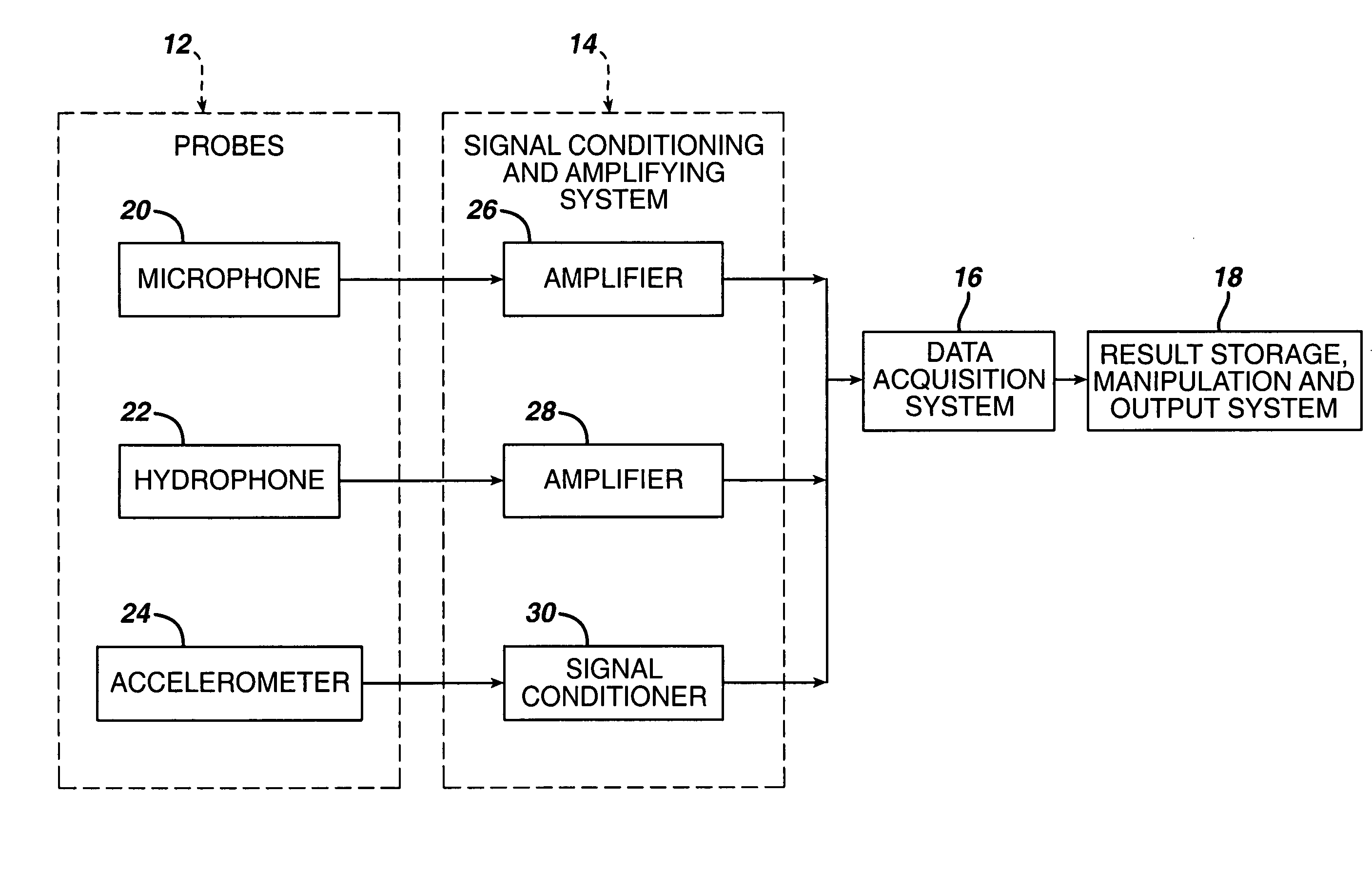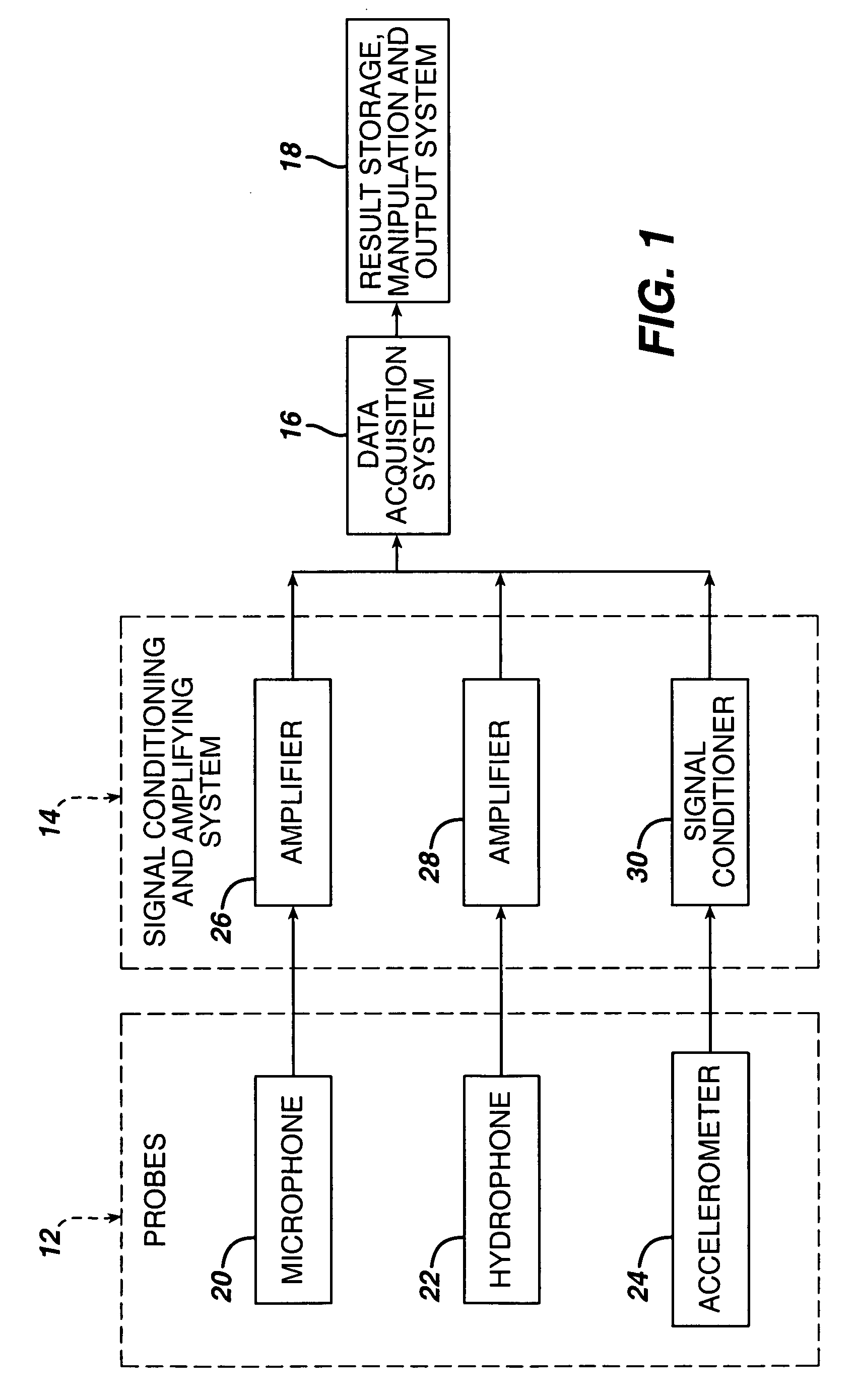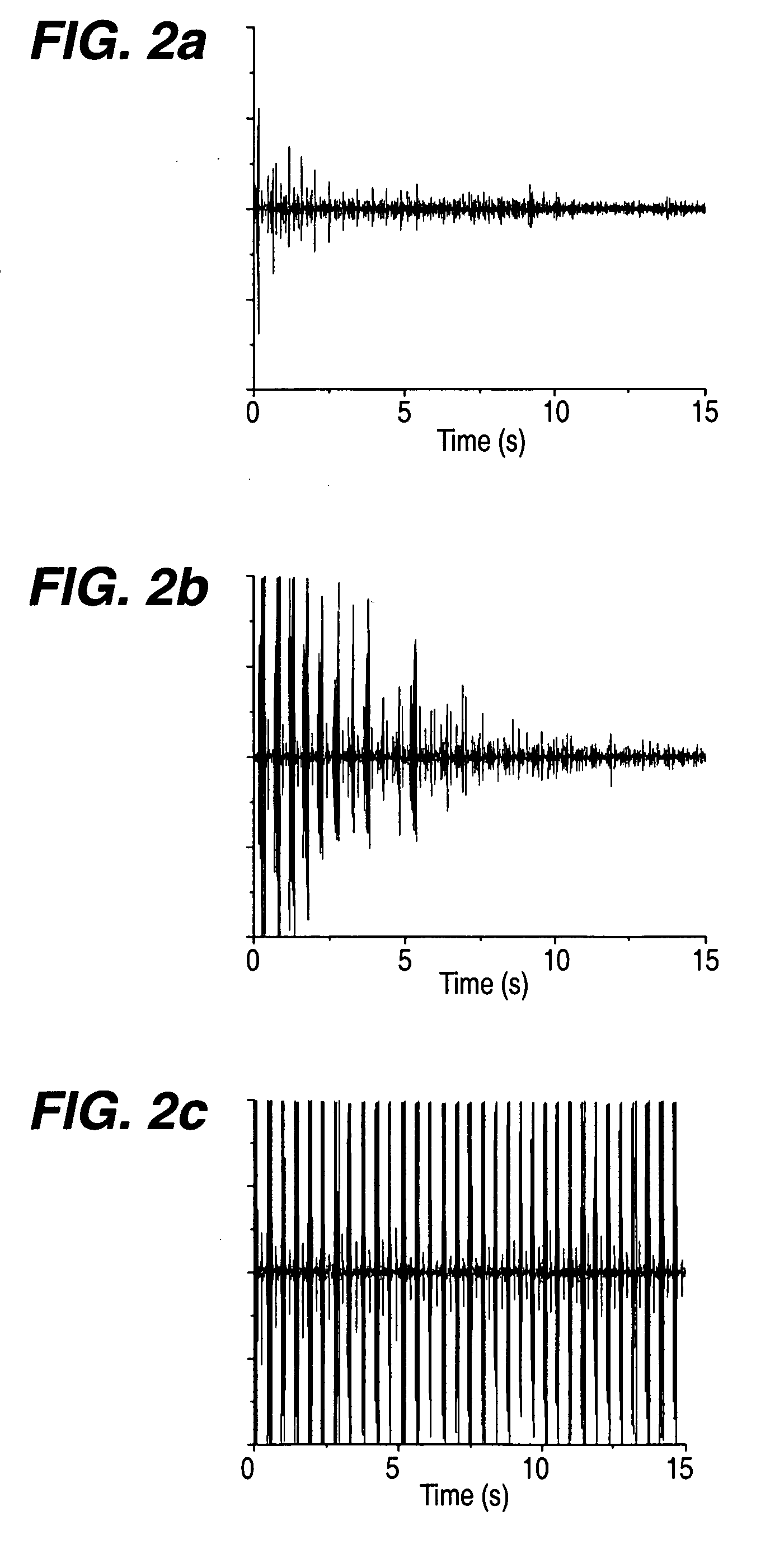Method and system for characterizing tactile perception
a technology of tactile perception and characterization method, which is applied in the field of characterizing tactile perception on the skin, can solve the problems of not being used in skin characterization acoustic emission, the inability of consumers to easily discern whether the claimed benefit is actually delivered, and the inability to quantify the extent to which it is delivered, etc., to achieve the effect of facilitating product selection, simple method of evaluation, and facilitating product customization and/or complian
- Summary
- Abstract
- Description
- Claims
- Application Information
AI Technical Summary
Benefits of technology
Problems solved by technology
Method used
Image
Examples
example 1
[0086] This example uses acoustic measurements to characterize the tactile properties on skin of surfactants applied thereto, e.g. slimy, squeaky and slimy / squeaky transition evaluation, using acoustic measurements.
[0087] An acoustic emission system 10 as generally described with reference to FIG. 1 was used for testing squeakiness and its transition properties of surfactant solutions. One probe 12, i.e., hydrophone 22 (Bruel & Kjaer, Atlanta, Ga., 8103 hydrophone), was mounted onto an inner wall of a container (not shown) for surfactant property testing in solution. The inner container wall may be machined with certain roughness in order to reduce the reflection of sound waves from the container wall. The charge signal from hydrophone was conditioned to voltage signal via a Bruel & Kjae Conditioner amplifier 28. Clean fingers were rubbed against each other inside the surfactant solution while data acquisition system 16 (CoolEdit 2000 from Syntrillium Software Corporation, Phoenix,...
example 2
[0096] This example demonstrates an assessment of the rinse profile of wash-off products, simultaneously using hydrophone 22 and accelerometer 24.
[0097] With reference to FIG. 1, in this example, a typical set-up for assessment of wash-off (cleansing) products was used, employing simultaneously hydrophone 22 and accelerometers 24. To characterize the rinsability and “feel” of skin cleansers, the acoustic signal can be detected by hydrophone 22 immersed in a tank filled with water (not shown) for rinsing an area of skin. Two accelerometers 24 were attached to the subject's skin (PCB 352A24 accelerometer for normal vibration, and PCB 356A15 triaxial accelerometer for tangential and normal vibration). A known amount of cleansers was applied on the wet forearm with the hand of an individual. The arm was then immersed into the rinse tank full of certain hardness water at certain temperature.
[0098] The other hand rubbed the arm with product while the rubbing sound was picked by hydropho...
example 3
[0108] 20 This example demonstrates evaluation of sensory properties of skin care leave-on products.
[0109] With reference to FIG. 1, system 10 for acoustic measurement and evaluation of sensory properties of leave-on and wash-off products included two accelerometers 24 (PCB 352A24, PCB Piezotronics, Inc., Depew, N.Y.) attached to the subject's forearm.
[0110] One accelerometer 24 was attached near the palm of the hand and the other near the elbow, to sense the normal vibration of skin surface. Two microphones 20 (½′ type 4189 pre-polarized free-field microphone, Bruel & Kjaer, Atlanta, Ga.) were mounted above the two sites where accelerometers 24 were attached. To generate skin vibration, the subject used the other hand (fingers) to rub the forearm starting at the elbow and continuing in the direction of the palm of the hand. Alternatively, a motorized “hand” equipped with loading cell and friction sensor can also be used to rub instead of using human fingers, in order to control t...
PUM
 Login to View More
Login to View More Abstract
Description
Claims
Application Information
 Login to View More
Login to View More - R&D
- Intellectual Property
- Life Sciences
- Materials
- Tech Scout
- Unparalleled Data Quality
- Higher Quality Content
- 60% Fewer Hallucinations
Browse by: Latest US Patents, China's latest patents, Technical Efficacy Thesaurus, Application Domain, Technology Topic, Popular Technical Reports.
© 2025 PatSnap. All rights reserved.Legal|Privacy policy|Modern Slavery Act Transparency Statement|Sitemap|About US| Contact US: help@patsnap.com



